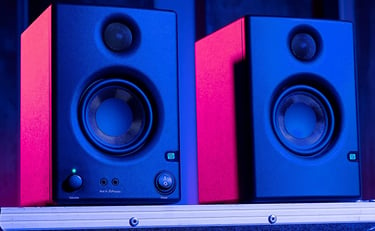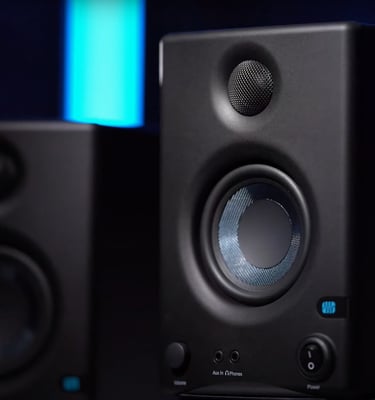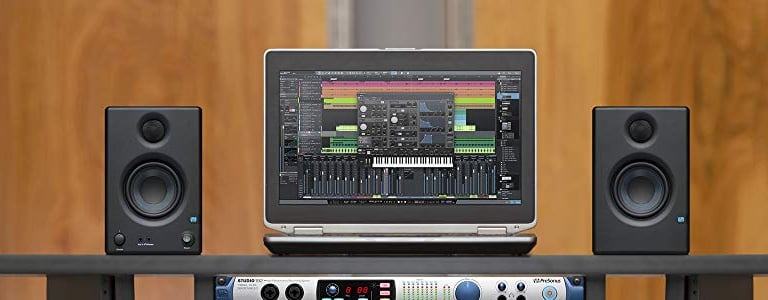
PreSonus Eris E3.5 Active Studio Monitor: A Thorough review for Beginners and Producers
Chasebeatz
6/29/2023
Introduction
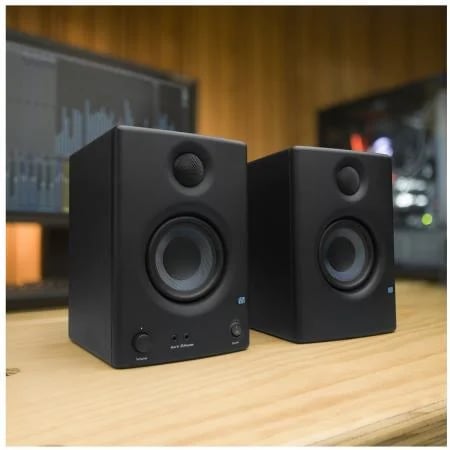

Choosing the right studio monitor is essential for accurate sound reproduction in music production. The PreSonus Eris E3.5 is a popular choice among beginners and professionals alike.
In this thorough music production review, we will cover everything you need to know about the Eris E3.5, including its suitability for beginners, key features, pros and cons, and its active/passive nature. Let's dive in!

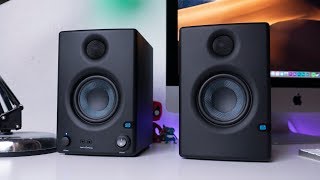
The Eris E3.5 is an excellent choice for beginners starting out in music production. Its affordability, compact size, and balanced sound signature make it an ideal option.
With the Eris E3.5, beginners can expect accurate monitoring, allowing them to fine-tune their mixes and make informed decisions about their music. It provides a solid foundation for learning the essentials of audio production.
While the Eris E3.5 is a popular choice for beginners, it is also highly regarded among professional producers.
Many experienced producers appreciate the Eris E3.5's compact design and reliable sound quality, using it as a secondary monitoring system or for on-the-go setups.
Its portability and affordability make it a valuable tool for producers who require a compact yet capable studio monitor.
For whom is this intended?
The Eris E3.5 active studio monitor is highly suitable for beginners entering the world of music production. Its affordability, compact size, and balanced sound signature make it an excellent choice.
With the Eris E3.5, beginners can expect accurate monitoring, allowing them to fine-tune their mixes and make informed decisions about their music.
Suitability for beginners and producers in general:
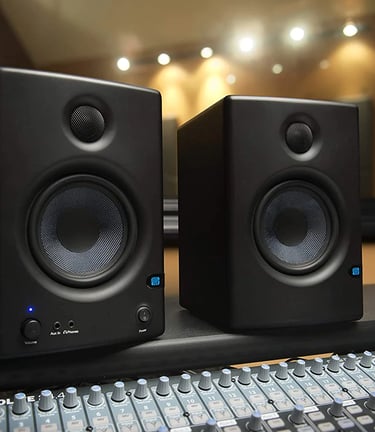

Design and built quality Eris E3.5 for music:
Design and Build Quality:
The PreSonus Eris E3.5 Studio Monitor features a compact and visually appealing design, making it an excellent choice for small studio spaces or home setups.
Its sleek black vinyl finish and well-designed front panel exude professionalism. The front-ported enclosure effectively minimizes bass distortion and provides versatility in terms of placement options.
While the overall build quality is decent, it may not be as robust as higher-end studio monitors.
The PreSonus Eris E3.5's Legacy:
The PreSonus Eris E3.5 Studio Monitor was introduced to the market 2018. Since its release, it has gained widespread popularity among music producers for several reasons.
Firstly, its affordability makes it an ideal choice for beginners starting out in music production or producers seeking a secondary monitor setup.
Secondly, its reliable performance and accurate sound reproduction have earned the trust of numerous users.
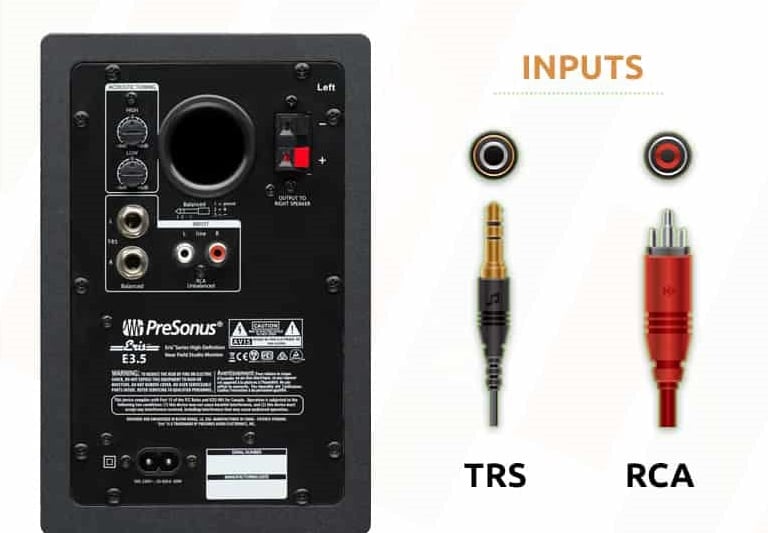

Placement:
Position the Eris E3.5 monitors at ear level and maintain an equilateral triangle formation with your listening position. This setup optimizes stereo imaging and ensures accurate sound reproduction.
Acoustic Treatment:
Consider implementing basic room treatment, such as foam panels or bass traps, to reduce unwanted reflections and improve the overall listening experience.
Calibration:
Utilize the rear-panel HF and LF controls to fine-tune the sound according to your environment. Experiment with different settings to find the optimal balance for your specific listening space.
How to Use:
Sound Quality:
The Eris E3.5 offers a balanced and detailed sound signature, providing accurate sound reproduction for precise monitoring.
The monitors have a relatively flat frequency response, allowing you to hear every nuance and make informed mixing decisions.
While the bass response is impressive for its size, it may not have the same depth and impact as larger studio monitors.
Controls and Connectivity:
The front panel of the Eris E3.5 features intuitive controls for volume adjustment, high-frequency tuning, and a headphone output for private monitoring.
These controls make it easy to fine-tune the sound according to your preferences. The monitors also offer versatile connectivity options, including RCA and TRS inputs, ensuring compatibility with various audio sources.
versatile connectivity options:
The PreSonus Eris E3.5 studio monitors offer versatile connectivity options, including both RCA and balanced ¼-inch TRS inputs.
This allows you to connect various audio sources without the need for additional adapters or converters, ensuring convenience and flexibility in your setup.
Acoustic Tuning:
PreSonus has implemented acoustic tuning features in the Eris E3.5 to enhance the listening experience.
The high-frequency tuning control allows you to adjust the treble response to suit your room's acoustics.
This feature helps compensate for any potential high-frequency deficiencies or room reflections, resulting in a more accurate and balanced sound.
The PreSonus Eris E3.5 studio monitors can be suitable for mixing and mastering, especially for beginners or those with limited studio space.
However, it's important to note that their compact size and limited bass extension may pose some challenges when it comes to critical low-frequency monitoring.
When mixing and mastering, it's crucial to have accurate and detailed monitoring to make informed decisions about the balance, tonality, and dynamics of your audio.
While the Eris E3.5 offers a balanced sound signature and accurate reproduction in the mid and high frequencies, the smaller woofer size might not provide the same level of low-frequency representation as larger monitors.
To compensate for this, it is recommended to use reference tracks and regularly test your mixes on other playback systems to ensure they translate well across different environments.
Additionally, combining the Eris E3.5 monitors with a subwoofer can help address the low-frequency limitations and provide a more comprehensive monitoring setup.
For professional mastering work that requires precise control over the entire frequency spectrum, some engineers may prefer larger, more powerful monitors that offer a wider frequency response and greater low-end accuracy.
However, the Eris E3.5 can still be a valuable tool for initial mixing and as a secondary monitoring system. Ultimately, the suitability of the Eris E3.5 for mixing and mastering depends on your specific needs, preferences, and the acoustic characteristics of your studio environment.
It's always recommended to audition different monitors and consider your specific requirements before making a final decision.
How to leverage your mixing and mastering skills With Presonus Eris E3.5
what is the difference between Presonus Eris E3.5 VS E4.5?
When comparing the PreSonus Eris E3.5 and E4.5 studio monitors, there are several critical details to consider. Here's a breakdown of the key differences between the two models:
Driver Size and Power:
The Eris E3.5 features a 3.5-inch Kevlar low-frequency transducer, while the Eris E4.5 has a larger 4.5-inch driver. The E4.5's larger driver size allows it to produce more powerful and extended bass response compared to the E3.5. The E4.5 also has a higher overall power output, providing a louder and more robust sound.
Frequency Response:
Both monitors offer a balanced frequency response, but the E4.5 extends slightly lower in the low-frequency range, resulting in more pronounced bass. The E3.5, while still capable of reproducing accurate sound, may have limitations in terms of deep bass response due to its smaller driver size.
Controls and Connectivity:
In terms of controls and connectivity, the E3.5 and E4.5 share similar features. Both models offer volume control on the front panel for easy adjustments. They also provide multiple input options, including balanced TRS and unbalanced RCA inputs, allowing for versatile audio source integration.
Size and Design:
The Eris E3.5 and E4.5 have a similar compact and visually appealing design, making them suitable for small studio spaces or home setups. However, the E4.5 is slightly larger in size due to its bigger driver.
Price:
As the E4.5 offers larger drivers and increased power, it tends to be priced slightly higher than the E3.5. The price difference reflects the enhanced performance and features of the E4.5 compared to its smaller counterpart.
In summary, the Eris E4.5 outperforms the E3.5 in terms of bass response, power output, and overall sound performance due to its larger driver size.
If you require deeper bass and more power, the E4.5 may be a better choice.
However, if you are on a tighter budget or have space constraints, the Eris E3.5 still provides reliable sound reproduction and represents a more affordable option.
Ultimately, the choice between the Eris E3.5 and E4.5 depends on your specific needs, budget, and desired sound performance.
Consider factors such as the size of your studio space, genre preferences, and intended use to determine which model best suits your requirements.
PreSonus Eris E3.5 Studio Monitor Frequency Response: In-Depth Analysis
The frequency response of a studio monitor is a crucial factor in accurately reproducing sound across the entire audio spectrum.
In this in-depth review, we will explore the frequency response performance of the PreSonus Eris E3.5 Studio Monitor.
By understanding its frequency range and characteristics, you can assess its suitability for your specific music production needs.
Frequency Range:
The PreSonus Eris E3.5 Studio Monitor offers a frequency response range of 80Hz to 20kHz.
This range covers the audible spectrum, ensuring that you can hear the full range of musical frequencies in your mixes.
However, it's important to note that the E3.5's frequency response has some limitations due to its smaller driver size.
Low Frequencies:
With a 3.5-inch Kevlar low-frequency transducer, the Eris E3.5 delivers decent low-frequency reproduction.
It can reproduce bass frequencies down to approximately 80 Hz. While it provides a satisfactory bass response for its size, it may not offer the same depth and impact as larger monitors or subwoofers.
This limitation is especially notable in bass-heavy genres such as EDM or hip-hop.
Mid Frequencies:
The Eris E3.5 handles mid-range frequencies with accuracy and clarity. This range is crucial for the presence and intelligibility of vocals, guitars, and other instruments.
The mid-range response of the E3.5 is well-balanced, allowing you to hear the subtleties and details in your mix.
High Frequencies:
The Eris E3.5 incorporates a 1-inch silk dome tweeter for its high-frequency reproduction. The tweeter performs admirably, delivering crisp and detailed highs up to 20kHz.
It ensures clarity and definition in high-frequency elements such as cymbals, strings, and vocal harmonics.
Frequency Response Consistency:
The Eris E3.5 maintains a relatively consistent frequency response across its range, which is essential for accurate monitoring. This consistency allows you to make precise adjustments to your mix without any significant frequency imbalances or surprises.
Room Acoustics Considerations:
It's worth noting that the frequency response of any studio monitor can be influenced by the room acoustics. Factors such as room size, shape, and placement of the monitors can affect the perceived frequency response.
PreSonus has included an Acoustic Space switch on the E3.5, which allows you to compensate for room anomalies and optimize the frequency response to some extent.
The PreSonus Eris E3.5 Studio Monitor offers a satisfactory frequency response for its price and size. With a range of 80Hz to 20kHz, it covers the audible spectrum, providing accurate reproduction of low, mid, and high frequencies.
While its bass response may be limited compared to larger monitors, the E3.5 still offers a balanced and consistent frequency response that allows for precise monitoring and mixing.
To achieve the best results with the Eris E3.5, it is important to consider room acoustics and potentially supplement it with subwoofers or larger monitors for extended low-frequency performance.
By understanding its frequency response characteristics, you can leverage the Eris E3.5 Studio Monitor effectively in your music production workflow.
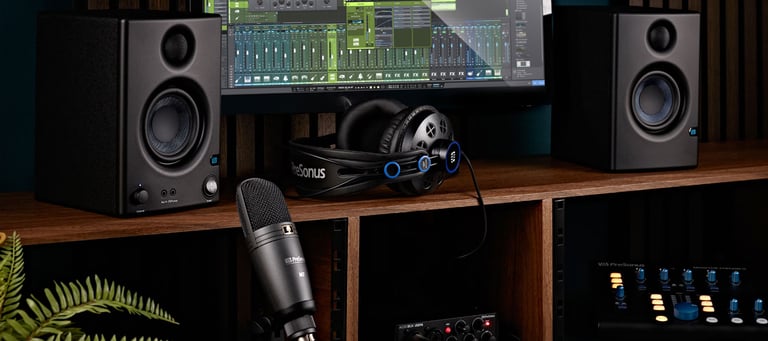

The PreSonus Eris E3.5 has gained widespread popularity since its release. Its affordability, compact design, and reliable sound quality have made it a go-to choice for many producers.
Additionally, its versatility and portability have contributed to its continued use, as it is suitable for various applications such as music production, podcasting, video editing, and multimedia content creation.
Compact and visually appealing design.
Front-ported enclosure reduces bass distortion.
Balanced frequency response for accurate sound reproduction.
Clear stereo imaging enhances spatial positioning.
Good transient response for detailed audio editing and mixing.
Multiple connectivity options for versatile audio source integration.
Front panel volume control for easy adjustment.
Acoustic Space switch optimizes sound for different room environments.
Front panel headphone output facilitates private monitoring.
Affordable price point for beginners and secondary monitor setups.
Pros:
Cons:
Build quality may not be as durable as higher-end studio monitors.
The smaller size may limit bass response for certain genres.
Limited low-end extension due to the small driver size.
Deep bass response might not be sufficient for bass-heavy genres like EDM or hip-hop.
Lack of XLR input may limit compatibility with certain professional audio interfaces.
The Acoustic Space switch may not provide enough adjustment for challenging room acoustics.
Popularity and Continued Use:
Conclusion:
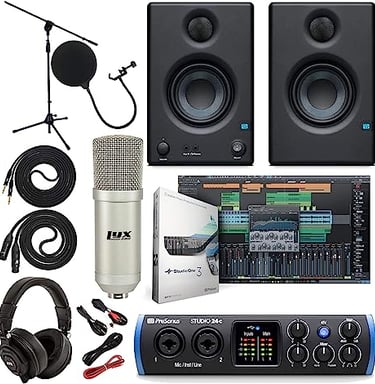

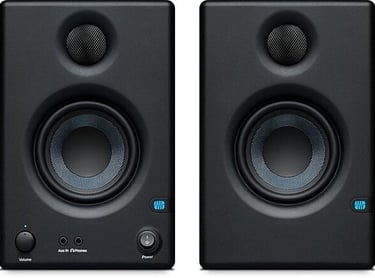

The PreSonus Eris E3.5 Studio Monitor offers an excellent balance of affordability, performance, and functionality, making it suitable for beginners starting out in music production and producers in need of a secondary monitor setup.
While it may have some limitations in terms of bass response and build quality, its accurate sound reproduction, compact design, and user-friendly features make it a popular choice among music producers.
Please note that these pros and cons should be considered alongside your specific needs and preferences to make an informed decision.
Thank you for joining us on this journey through the world of Presonus Eris E3.5 Studio monitor.
Stay Tuned for the Next Installment!!
Presonus Eris E3.5: $99.99- $129.99 -- €95,00
Complete bundle: $299.99 - $399.99
Please note that some of the links provided in this content may be affiliate links. This means that if you make a purchase through those links, I may earn a commission at no additional cost to you.


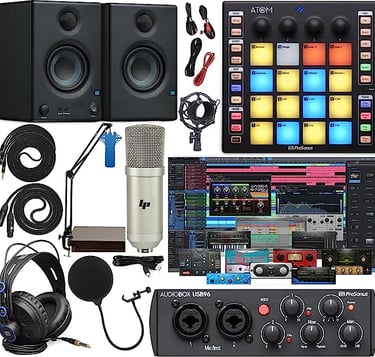


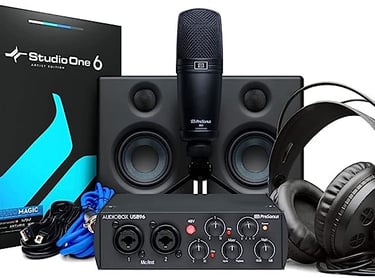
Complete bundle: €259,00 - €921,79

Watch my new Instrumentals


Chase
full-time Music Producer with over 3 years of experience using Ableton Live D.A.W. Chase will help you develop your music production abilities with tutorials, challenges, and also home studio gear reviews.


Get connected


ChaseBeatz is a budding music production business dedicated to crafting dynamic and engaging beats for emerging artists. With a focus on providing affordable and high-quality productions, ChaseBeatz helps aspiring musicians bring their creative visions to life, offering a solid foundation for their musical journey.


